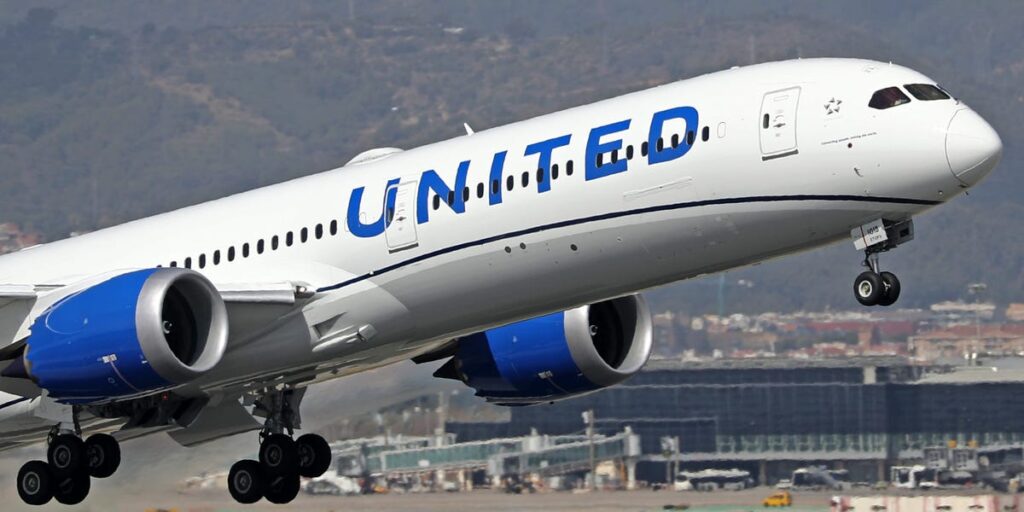Five people were injured when a United Airlines flight encountered severe turbulence last month.
The incident emerged after the Federal Aviation Administration filed a report about it on Tuesday.
United Airlines Flight 1 travelled from San Francisco to Singapore on March 26 — a 16-hour redeye flight.
It was in the Philippines’ airspace, about 12 hours from San Francisco, when the incident occurred.
According to the FAA’s report, the Boeing 787 was carrying 174 passengers and 14 crew members when it encountered severe turbulence.
One passenger and three cabin crew members sustained minor injuries, while one cabin crew member was seriously injured.
It isn’t yet clear precisely what type of injuries they sustained.
United and the FAA did not immediately respond to requests for comment.
The risks of turbulence have come under more scrutiny since an incident last May when a Singapore Airlines passenger died. Another 71 people were injured.
Korean Air has announced it will stop serving instant noodles in a bid to prevent burn accidents caused by turbulence.
It said turbulence had “become a persistent and growing problem in recent years,” adding that the number of incidents had doubled between 2024 and 2019.
The airline also suggested climate change had had an impact, citing “large temperature differences between altitudes.”
Turbulence is created when differences in wind speed result in more friction between air molecules. The warming climate imparts more energy into the air, which creates more friction.
This is especially notable around the jet streams, where clear-air turbulence is most prevalent.
“Climate change is making encounters with clear air turbulence more likely and more severe,” Guy Gratton, an associate professor of aviation and the environment at Cranfield University, previously told BI.
In a 2023 study, researchers from the University of Reading found turbulence was getting more common over the North Atlantic, around the north polar jet stream.
At a typical point, the most severe type of clear-air turbulence increased by 55% between 1979 and 2020, the study found.
Read the full article here
















